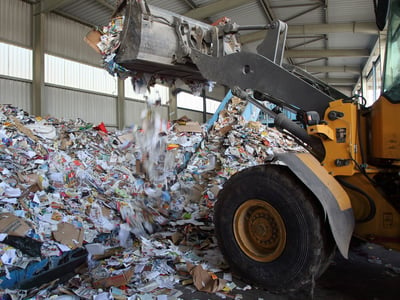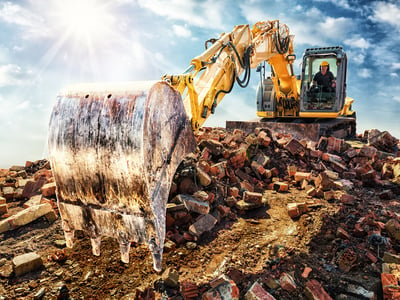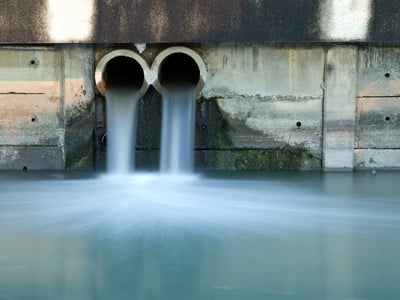Make clean air part of the housekeeping routines at your recycling facilities – the health and safety of your workers, plant equipment and business depend on it.
Sort your waste – and the problems caused by the many sources of odours, dust and harmful gases at recycling plants – with dedicated molecular filtration solutions that keep danger at bay.
What are you looking for?

Camfil’s robust molecular filters help to eliminate odour nuisances and remove heavily contaminated gases from this highly valuable resource for renewable energy, compost and soil enhancers.

Minimise dust formation and odour emissions and comply with environmental and safety regulations at your recycling facility or waste collection points with robust air filtration solutions.

Don’t choke off your business. Minimise the impact of contaminated air on surrounding communities and personnel, and the effects of corrosion on equipment, with Camfil’s gas, odour and corrosion control solutions for wastewater treatment plants.

Did you know Camfil have a full range of retrofit filters that can be utilised in all the most common brands on the market. Camfil filters are not just designed to work but to optimise your dust extraction systems performance
Food and beverage Life science and healthcare Manufacturing and machinery Energy and Power SystemsOften the initial purchase price for air filters or dust collectors is just the tip of the iceberg. The true costs for energy, maintenance and disposal are lurking below the surface. To make the most economic decision in the long-run, a detailed calculation considering all the factors will help to reduce your overall expenditure.
Food and beverage Electronics and optics Life science and healthcare Commercial and public buildings Manufacturing and machinery Standard and regulations SustainabilityNot all people who purchase our products are experts in air filtration and they shouldn’t have to be either. The purpose of Camfil City is to give everyone a chance to learn the basics of what our clean air solutions can do for them.
The wastewater undergoes a long process at Middelfart Wastewater, where the wastewater is treated and at the end of the process it eventually becomes purified water which is then released to the sea surrounding Middelfart. In addition, the byproducts biogas is converted to electricity and heat as well as bio-fertilizer that is being used on farmers’ fields.
Hydrogen sulphide is one of the major contaminants that needs to be eliminated from biogas production as part of the purification. This can be achieved using mobile activated carbon filters that remove harmful gases and odours from the process.
Dealing with airborne odours, toxins and gases can be a big challenge. Learn about how Molecular Contamination Control and how it can protect against the harmful effects of these airborne contaminants.
Clean air at a disused nuclear power plant operated by Barsebäck Kraft AB (BKAB) in Sweden. The used nuclear fuels were removed a long time, but demolishing the nuclear power plant is a dirty job that requires maximum safety and control. To keep the air clean in the demolition process, air purifiers from Camfil were used.
CamCarb VG modules with loose-fill media are robust solutions suited for make-up air (outdoor air) and recirculation air systems. The primary use is the control of acidic gases that are responsible for the corrosion of electronics and electrical equipment in heavy process industries such as pulp and paper mills, petrochemical refineries, mining and metal refining operations, and wastewater treatment plants.
CamPure 32 is the new ideal Camfil media for the removal of hydrogen sulfide during the production of biogas in an anaerobic process. Learn how this farm in France applied the high quality chemical absorbent media to their biogas application.
Activated carbon (also known as activated charcoal) is an exceptionally versatile material that can control the vast majority of molecules that pollute the air – that’s more than 150 million catalogued chemicals.